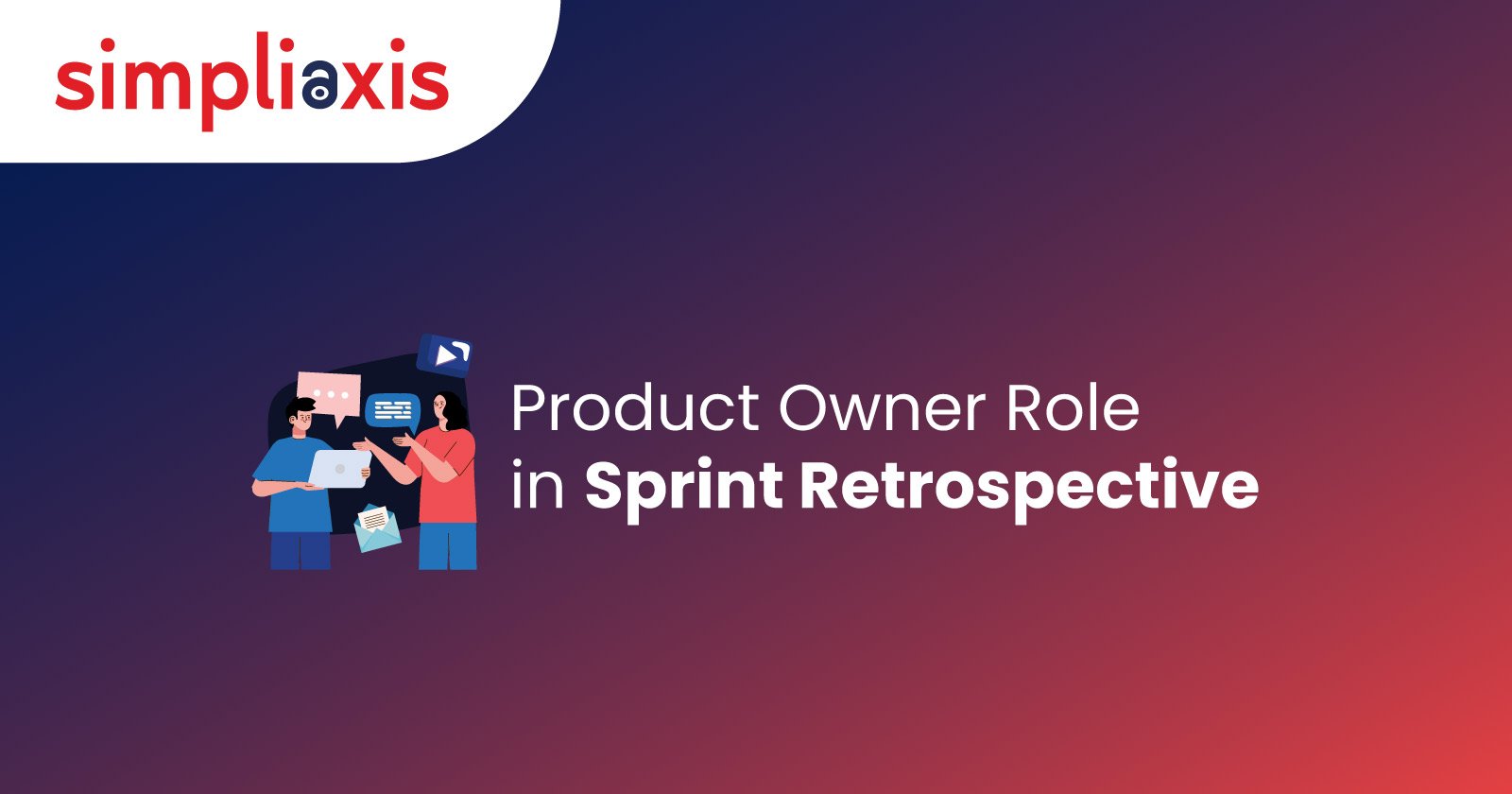In Agile, three important aspects of planning, reviewing, and improving are taken at specific moments. The Scrum Team comprises the Product Owner, the Scrum Master, and the Developers. Here, we are going to talk about improving the process and the team. A Sprint Retrospective is truly a significant event in the Scrum approach when the team reflects on its development process and thinks of ways to improve it. Out of the three Scrum roles that have been mentioned above, the Product Owner has to play his/her part in the Sprint Retrospective. Basically, the Sprint Retrospective gives everyone concerned a chance to stop for some time and reflect on what has happened in the just completed Sprint. This means everyone gets a chance to improve collaboration as well as their work practices and to get ready to deliver an even better product. This is the moment when the entire team sits together and looks at what has happened and what they can improve the next time.
The Crucial Role of the Product Owner in Sprint Retrospectives
Once the Sprint ends, the Sprint Review meeting takes place and it is followed by the Sprint Retrospective meeting. The aim of the Sprint Retrospective is to come out with measures for improvement. The Product Owner must attend this meeting so that his or her relationship with other members of the Scrum Team becomes stronger and collaboration with them better. The Sprint Retrospective meeting is not an exercise in buck-passing or blaming. It is conducted to determine actionable improvement measures. So, how can the Product Owner contribute to this? What is the role that a Product Owner plays in the Sprint Retrospective? We will have a look at that now.
The Product Owner should participate in the Sprint Retrospective and help the Scrum Team make the most of it. Let's examine the Product Owner's role in the Sprint Retrospective in detail.
1. Take part and speak out
The Product Owner is as much a part of the Scrum Team as the Scrum Master and the Developers. Even after being in charge of the product, the Product Owner has to depend on the collaboration of the other members of the Scrum Team for building a successful product. So, the Product Owner gets an opportunity to strengthen his or her relationship with the rest of the team which would lead to better collaboration. Besides, the Product Owner gets to understand the reason the team needs time in the next Sprint to make improvements like examining a new tool for testing.
Apart from this, the Product Owner must speak out and offer suggestions if he or she thinks that the team must do certain things in a different way or if they think that the team can achieve a higher velocity or better quality. The Product Manager should share their concern openly like the team is not making that extra effort or work has not been completed. The Product Owner can raise all these issues during the Sprint Retrospective. The Product Owners do not attend the Sprint Retrospective meeting just as a guest. They have to be active participants in the meeting.
The Product Owner is also the customer's voice. So, they share the customer's concerns and requirements. The team expects feedback from the Product Owner regarding what the market thinks of the product that is being developed. Is it being received well? Whether the customer's expectations are being met? The Sprint Retrospective is the best opportunity for the Product Owner to answer all these questions so that the team is clear about the way forward.
The Product Owner can share his or her future vision with the rest of the team and how they want the work to be done, what they expect from the team, how they perceive working together, and what new things they would like the team to try. Doing this at the end of every Sprint would help the team get some practical examples from the Sprint that just ended and which would be fresh in everyone's mind.
Also, Check:Purpose of the Sprint Retrospective Meeting
2. Learn about the team
It is important that the Product Owner knows about the team, how they are working, and the problems it faces. So, the Product Owner should learn about the challenges the team is facing, their working style, what increases their speed and what reduces it, and should know whatever is happening in Sprint. As we said earlier, the Product Owner needs the collaboration of the team to bring alive his or her vision of the product, so whatever the team does directly affects the Product Owner. Therefore, learning everything possible about the team would help in finding the solutions to the issues and facing the challenges together. The major things that a product manager learns from the Sprint Retrospective are the human side of the team, any technical issues that have come up during the Sprint, how much they understand the product, and the decisions they take on a daily basis.
On the human side, the Product Owner's relationship with the team matters a lot. It may determine how much the team is willing to go beyond their normal capabilities and efficiency to create a quality product. If the Product Owner and the team have a good relationship, the team will put in that extra effort to build an extraordinary product.
The technical issues that a Scrum Team faces are the most critical ones. Th Product Owner may be bestowed with technical issues but ultimately all these issues impact every aspect of the result like scalability, roadmap, functionality, maintenance, etc. Initially, the Product Owner may think that he or she can't do much about certain technical issues but when dug deeper, it is found that the team facilitates some business functionalities with technical work. And from an Agile point of view, it is important to anticipate them. The Product Owner boosts the trust of the customers by going beyond the business functionalities and sharing the technical aspects.
The Product Owner should also know the reasons for the increase or decrease in the team's speed. Knowing these causes will help the product owner create a better backlog and user stories, which will lead to a better relationship with the customer and the other stakeholders. Moreover, understanding these causes will mean that the Product Owner can help the team in moving at a faster speed and deliver quicker.
3. Teach the team
The Sprint Retrospective is also a moment when the Product Owner can teach a thing or two to the team. The product owner has a broader perspective, so he or she should teach the team about the business perspective, vision, and attitude to be adopted. The first thing a Product Owner can do is share the product's vision and make the team clearly understand it. Usually, there is not much time during routine work to share such an understanding of the perception of the product. So, the Sprint Retrospective is an ideal time to share these insights and the Product Owner must take advantage of this. He or she can make sure that the team shares their vision of the product. They can teach the team the attitude they should adopt toward the customer and make them understand how the team can help them.
4. Work together
The Product Owner should join the rest of the team in finding ways to improve working as a team. We have already described how the product owner can help the team tackle the issues and face the challenges. The retrospective is the time when decisions are made on the actions that need to be implemented for monetizing the retrospective. The Product Owner can define the actions needed to be taken to improve working as a team. This will not only improve productivity but also cooperation among the team members. Once the actions are defined, it is for the Scrum Master to implement those actions during the Sprint planning and the day-to-day working of the team. The essence is that all the members of the Scrum Team must get the feeling that the Product Owner is as much a part of the team as they are. Such kind of understanding and cooperation will go a long way in strengthening the team and the team delivering an exceptional product.
So, the Product Owner's role in the Sprint Retrospective is quite a vital one. The Product Owner attends the Sprint Retrospective to improve his or her relationship with the team, understand the issues they are facing, share the product's vision, and improve the team's working. The Product Owner's involvement in the Sprint Retrospective is important both for the Product Owner as well as the Scrum Team as a whole. A better bonding and understanding between the Product Owner and the team will not only ensure a great product but will also lead to better customer and stakeholder satisfaction.
Also, Check: Product Owner Roles in Sprint Planning
Conclusion:
The Product Owner's role in the Sprint Retrospective is pivotal for enhancing collaboration, driving improvement, and ensuring the success of the Scrum Team. By actively participating in the retrospective, offering insights, and sharing the product vision, the Product Owner strengthens relationships within the team and fosters a culture of continuous improvement. Moreover, by understanding the team's challenges, facilitating solutions, and guiding towards a shared goal, the Product Owner plays a vital role in optimizing team performance and delivering exceptional results. Enroll with Simpliaxis today to empower yourself with the skills and knowledge to excel as a Product Owner in Agile environments.






















